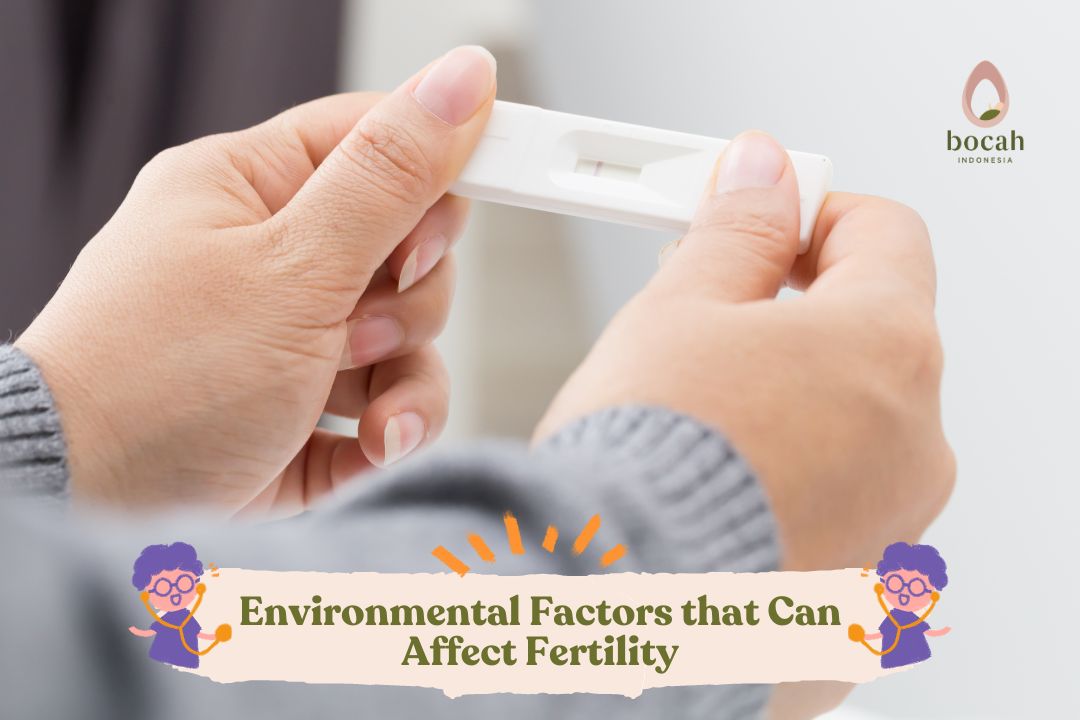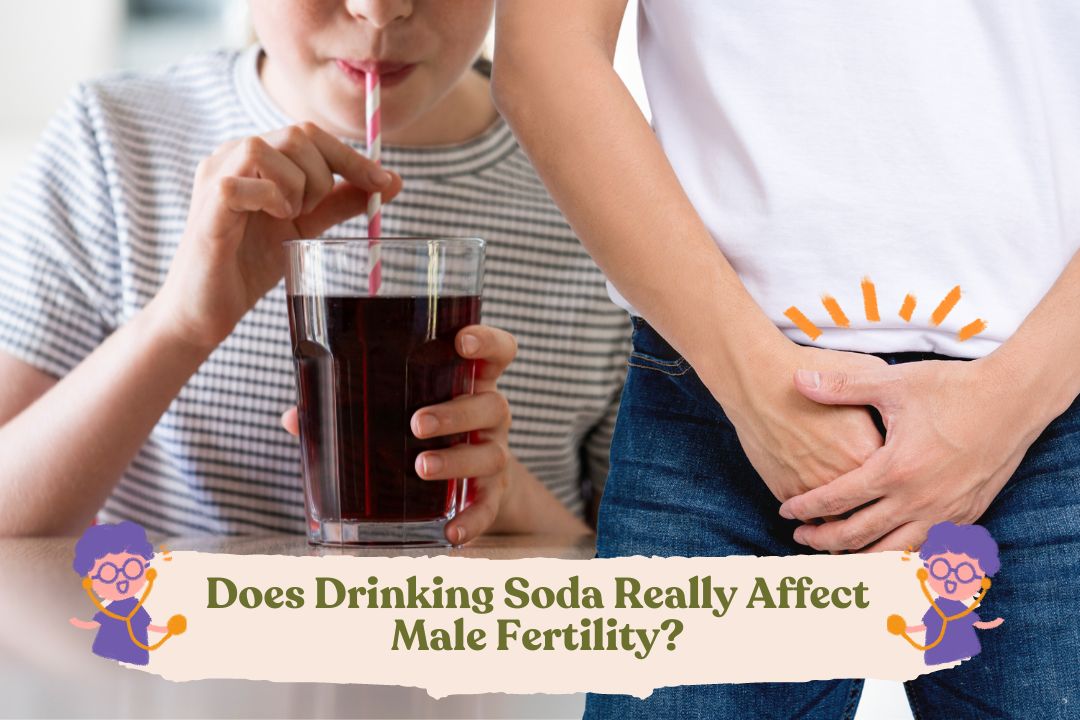Environmental Factors That Can Affect Fertility

The environment in which you live has a significant impact on health, including fertility.
Reproductive health and fertility are not only influenced by conditions within the body but also by many other external factors. One of these factors is the environment. According to recent studies, exposure to certain environmental factors can have negative effects on reproductive health.
What are environmental factors?
Environmental factors are external factors that can affect a person’s health. These factors include air pollution, water contamination, exposure to toxins and harmful chemicals, and even lifestyle choices such as diet and exercise habits. Environmental factors can have both positive and negative impacts on health. These factors are also influenced by various other factors, such as geographical conditions, climate, and social and economic conditions.
How do environmental factors affect fertility?
Environmental factors can directly impact fertility by disrupting the reproductive process. Exposure to harmful chemicals, toxins, and pollutants can damage reproductive organs and interfere with related hormone levels, making it more difficult for couples to conceive. For example, exposure to lead and other heavy metals can cause sperm abnormalities, while exposure to pesticides and certain chemicals can disrupt the ovulation process affecting female fertility.
Environmental factors can also indirectly affect fertility by increasing the risk of health conditions that complicate the fertilization process.
Tanya Mincah tentang Promil?
What are the environmental factors that can affect fertility?
There are many environmental factors that can affect fertility, including:
Endocrine-Disrupting Chemicals (EDCs)
Endocrine-disrupting chemicals (EDCs) can interfere with hormone production and affect the reproductive system. Three main chemicals to be cautious of are bisphenol A (BPA), phthalates, and polybrominated diethyl ethers (PBDEs).
- Bisphenol A. BPA is found in plastic, metal can coatings, cashier receipts, computers, phones, and reusable food containers. Exposure to BPA can occur through inhalation, consumption, and skin absorption. Studies have found that BPA exposure can negatively impact the quality of eggs, embryos, genetic normality, and placental development. Concerns about BPA have led to the emergence of “BPA-free” plastic products, which often use bisphenol S, a similarly hazardous compound. To avoid these chemicals, limit the use of plastic containers, avoid reheating food in the microwave, and switch from plastic to glass or stainless steel containers. Also, avoid canned food and bottled water with a number 3 or 7 on the bottom of the packaging.
- Phthalates. These synthetic compounds are found in toys, food processing, infusion tubes, body lotions, and floor processors. A study examining environmental exposure’s impact on the success of in vitro fertilization (IVF) programs indicated that phthalates can reduce pregnancy rates, increase the risk of miscarriage (before 20 weeks of pregnancy), and premature birth. Exposure in men is associated with an increase in sperm DNA damage. To avoid exposure to phthalates, replace plastic with glass or stainless steel for containers or cooking utensils, minimize heating food in plastic containers, and reduce the consumption of fast food or processed food.
- Polybrominated Diethyl Ethers (PBDEs). These are flame retardants used on fabric-covered furniture, textiles, carpets, and electronics. Exposure during pregnancy is linked to thyroid disorders in pregnant women. Other studies indicate an increased prevalence of miscarriage in 28% of patients with higher PBDE levels during the pre-conception period. In children, high PBDE levels during neural development are associated with lower intelligence quotient (IQ) or decreased attention.
- Heavy Metals
Exposure to heavy metals also affects fertility. Heavy metals known to affect reproductive activity include lead, mercury, cadmium, and arsenic. Exposure can come from natural and household/occupational environments, such as lead exposure from lead-based paint or mercury and arsenic exposure through seafood and water.
- Lead. Lead exposure can occur from various sources, including lead-containing paint, lead pipe water, cosmetics, construction sites, and herbal supplements. Studies have found that individuals with blood lead levels >15.47 ppb have a twofold greater risk of infertility than those with levels below this threshold. Increased blood lead levels are also associated with an increased risk of miscarriage and premature birth.
- Mercury. Exposure to this metal usually comes from food, especially predator fish consumption. Mercury can reach the sea through industrial waste sources and then accumulate in the bodies of predator fish. Another rarer source is exposure in gold mining and some skin-lightening creams. Studies have found that mercury poisoning is associated with female infertility, and if it occurs during pregnancy, it is related to fetal nervous system developmental disorders.
- Cadmium. Cadmium exposure can come from rechargeable batteries and certain paints and plastics. The presence of cadmium in the soil results in it being found in various foods, such as rice, wheat, leafy vegetables, and shellfish. Blood cadmium levels are also found to be higher in smokers. In a prospective study of infertile couples undergoing IVF, fertilization and implantation rates were found to decrease in women with increased blood cadmium levels. However, further studies are needed to confirm this.
- Arsenic. Arsenic exposure usually comes from specific groundwater sources. However, it can also originate from pesticides and certain industries. From study results, arsenic exposure is primarily related to unexplained male factor infertility.
Smoking
Smoking can affect fertility. However, this environmental exposure is highly modifiable. Smoking is most commonly associated with various pregnancy complications, such as placental abruption and premature birth. Regarding fertility, the effects of smoking are known to depend on the dose. The prevailing theory states that the accumulation of cadmium and cotinine (the main nicotine metabolite) in the ovarian follicular fluid reduces egg quality, leading to infertility. Cotinine levels were also found to increase in non-smoking women living with smokers.
In smoking men, there is evidence of decreased sperm concentration and motility (movement). In animals, it has been found that smoking can reduce the ability of sperm to penetrate the zona pellucida of the egg during the fertilization process.
In a meta-analysis of seven studies on patients undergoing IVF, it was found that couples where one or both partners smoke require twice as many IVF cycles before achieving pregnancy compared to non-smoking couples.
Air Pollution
Studies show a relationship between air pollution and pregnancy complications such as miscarriage, premature birth, stillbirth, and low birth weight. Another study indicates higher infertility rates in couples living near roads. In children, it has also been found that air pollution is associated with low intelligence quotient (IQ) levels in children.
Pesticides
Some pesticides, such as hexachlorocyclohexane, polychlorinated biphenyls (PCBs), and dichlorodiphenyltrichloroethane (DDT), are known to reduce women’s fertility when their levels rise in the blood. Women with the highest PCB levels experience a 50% decrease in the ability to get pregnant and, if pregnant, an increased risk of miscarriage.
The worst pesticides and herbicides include dicamba (reducing fertility by 49%), glyphosate (39%), 2,4-D (29%), organophosphates (25%), and thiocarbamates (<0,5 portion/day)
To Prevent Environmental Factors from Negatively Impacting Fertility
There are several things you can do to reduce exposure to environmental factors that may affect fertility:
- Pay attention to your diet. Consuming healthy foods rich in fruits, vegetables, and grains can help reduce the risk of obesity. Obesity itself is one of the independent risk factors for infertility.
- Exercise regularly. Regular exercise can help you maintain a healthy weight and reduce the risk of health problems that can impact fertility.
- Reduce exposure to toxins and pollutants by:
- Avoiding sources of bisphenol A, such as canned foods.
- Avoiding processed and fast foods.
- Avoiding products containing endocrine-disrupting chemicals.
- Using natural cleaning products and avoiding the use of pesticides in the yard.
- Ensuring that the water source at home is clean and free from heavy metal contamination.
- Avoiding outdoor activities during poor air quality and using HEPA filters indoors.
- Quit smoking. As mentioned, smoking is associated with decreased fertility in both men and women. Quitting smoking can increase the chances of getting pregnant.
- Get a blood test. If you work in an environment with exposure to hazardous chemicals or may be exposed to environmental factors that can affect fertility, discuss with your doctor whether it is necessary to undergo tests.
Conclusion
In conclusion, environmental factors have a significant impact on fertility. By taking steps to reduce the risk of exposure to these factors, you can increase the chances of getting pregnant and have a healthy pregnancy.
Source:
- Jain M, Singh M. Environmental Toxins and Infertility. [Updated 2023 Jun 7]. In: StatPearls [Internet]. Treasure Island (FL): StatPearls Publishing; 2023 Jan-. Available from: https://www.ncbi.nlm.nih.gov/books/NBK576379
- Louis GM. Persistent environmental pollutants and couple fecundity: an overview. Reproduction. 2014 Apr 1;147(4):R97-104.
- Pizzorno J. Environmental toxins and infertility. Integrative Medicine: A Clinician’s Journal. 2018 Apr;17(2):8.
- Egg Freezing for Women: Is It Safe? - 10/07/2025
- The Benefits of Tomatoes for Men’s Health and Fertility - 30/05/2025
- What Is SIS? Understanding Sonohysterography for Uterine Health - 28/05/2025










